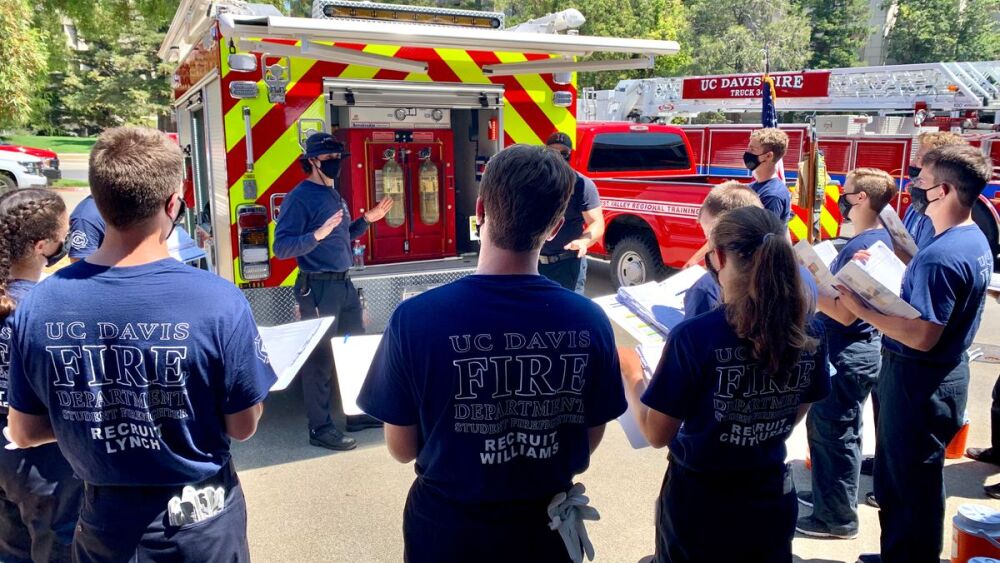Over the last several years, the annual Firefighter Safety Stand Down has focused on a variety of topics important to the health, safety and survival of fire and emergency service personnel. We have covered behavioral health, annual medical physicals, exposure risks, cancer and, in the last two years, made a pivot toward emphasizing more operational areas of everyday risk that we face, including 2020’s focus on safe operations on roadways and last year’s “Rebuilding Rehab” theme.
Each year when planning the Stand Down, the event partners – the IAFC Safety, Health and Survival Section; National Volunteer Fire Council; NFPA; and Fire Department Safety Officers Association – survey the landscape of our industry looking for ways that we can provide resources to address some of the most pressing occupational hazards of the day. The amount of tragedy we have seen in our communities and in our agencies over the last year is startling and posed a unique challenge when we asked ourselves the question, “What’s the most important thing that we can get in front of our firefighters for 2022?”
The answer: situational awareness.
Understanding and applying situational awareness
The theme of Safety Stand Down 2022 focuses on the importance of situational awareness to help firefighters solve problems, prevent bad outcomes, and make better decisions in high-stress environments. During Safety Stand Down week – this year from June 19-25 – daily focus areas will highlight situational awareness during multiple incident types:
- Day 1: Situational awareness at structure fires: 4 questions to guide decision-making
- Day 2: Situational awareness at EMS incidents: Overcoming complacency
- Day 3: Situational awareness at roadway incidents: Honing a defensive mindset
- Day 4: Situational awareness on wildland fires: Share the mental workload
-
Day 5: Situational awareness during acts of violence: Vigilance is key
Safety Stand Down resources for each incident type, as well as general situational awareness information, are available at the Safety Stand Down resources center.
Every year I am asked what to do if my organization doesn’t participate in the Firefighter Safety Stand Down? The answer is simple: Start with your crew, your battalion or you as an individual, because the time that you take to understand situational awareness and how it applies to your work (and life outside of work) is valuable on any scale.
Studying and understanding situational awareness requires you to look beyond the obvious on the emergency scene and in non-emergent situations where your decisions can have implications that impact your health or the well-being of others.
A non-emergent example of incomplete situational awareness is firefighting crews doing an outdoor high-intensity workout on a red flag day. What are our warning signs for situational awareness? High temperatures, low humidity, high-winds, dehydrated firefighters, fatigued muscles and a high risk for an incident that would not only be long in duration but also physically demanding. Sometimes these issues with situational awareness are so obvious they could hit us in the face, yet we have our routines, and although well intended, some of our choices can have unintended consequences.
The need for situational awareness is ever present even when we are away from the station. For example, I am writing this using a speech-to-text feature because I fell off my skateboard and broke my wrist. While it was a humbling experience on many levels, looking at it through the lens of situational awareness, there were many offramps that would have resulted in a different outcome if I hadn’t ignored the warning signs:
- Fatigue: I had been skateboarding for over an hour and was tired, which means my form was off and my coordination somewhat depleted.
- Distraction: I was listening to a great track from Lizzo‘s latest album and was probably not paying as much attention as I should have been to the need for coordinated movement.
- Lack of PPE: I failed to wear the proper PPE, and while I was lucky that I didn’t hit my head or break something more significant, my failure to match appropriate protection to my 42-year-old body lead to an injury that I’m pretty sure anyone reading this could see coming.
Join us!
Joining us for this year‘s Safety Stand Down is Dr. Richard Gasaway, an expert in situational awareness, to help guide you through expanding your knowledge base. While other parts of our operations may be “shinier” or more exciting in training, trust that a foundational knowledge of situational awareness will improve your ability to respond, react, make decisions, stay safe and remain healthy.
Visit www.safetystanddown.org to start your learning today! Then watch for additional resources the week of the Stand Down as we dive into specific incident types and explore how situational awareness impacts each of those unique circumstances.













